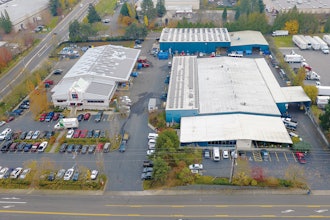While the July 1 deadline requiring products to be RoHS compliant has come and gone, the responsibility for documenting compliance continues to be an ongoing obstacle for U.S. manufacturers.
The European RoHS (Restriction of Hazardous Substances) Directive stipulates that six substances - lead, cadmium, mercury, hexavalent chromium, PBB (polybrominated biphenyls), and PBDE (polybrominated diphenyl ethers) - are no longer allowed to be used in products manufactured or sold in the European Union.
But meeting the RoHS directive is not just about designing a compliant product; manufacturers must provide documentation proving that all components in the product are compliant and that the manufacturing process is compliant as well. This documentation process is where many manufacturers are falling short in trying to meet RoHS regulations.
It's Not Just Product Design
"Most U.S. manufacturers concentrated on designing a product that would meet the July 1 deadline," said Eric Larkin, CTO of Arena Solutions, a provider of on-demand product lifecycle management systems. "They neglected to put in place management systems that would allow them to track, document and report compliance as well as demonstrate due diligence when required."
The EU is not going to accept "a spreadsheet with 'checkmarks' as sufficient evidence," commented Larkin. Complete compliance records must be available and these records must be kept for four years after a product has been marketed.
This means that a manufacturer must track the procurement and purchasing of components, and prove they are buying specified compliant parts. Purchasing records must show that they specified a certain part to meet RoHS regulations, and these records must also show that the correct part was received and used.
"Large manufacturers who are involved in global manufacturing are further ahead with RoHS compliance and documentation practices," said Ken Amann, director of research at CIMdata, Inc., a PLM consulting organization. "But many small and mid-size manufacturers in the U.S. do not have a good global outlook and are finding it more difficult to grasp the EU laws."
Some manufacturers did not pay strict attention to RoHS deadlines and believed there would be a transition period allowing for time to meet guidelines. Other companies delayed making investments to meet RoHS standards, and are now trying to catch up so as not to be shut-out of the European market.
"Many manufacturers might have the tools in place for compliance, such as a redesigned product and compliant components, but not the processes and reporting functions needed for documentation," said Amann.
Three Things To Know
There are three key things about RoHS compliance that manufacturers need to know, counsels Jim Brown, vice president of global product innovation and engineering research at the Aberdeen Group, a business research organization.
"Manufacturers must understand the requirements, design a compliant product, and prove compliance with documentation," explains Brown. "If any one of these elements is missing, the manufacturer is missing 'the whole thing.''
According to results from Arena's RoHS Readiness Survey, 60 percent of respondents are not confident they can track all parts and materials in their products. While U.S. manufacturers might be used to deadline extensions for other types of regulations, they are finding the EU is not so flexible when it comes to deadlines. Instead, manufacturers are in danger of having their products left on the shipping dock if the products do not meet RoHS guidelines.
"The manufacturing process is another area that must be documented," explains Larkin. "Any materials added during product production must be in compliance - this means glues, paints, coatings, even labels or stickers - must be documented as meeting RoHS standards. Product testing becomes crucial at this point, and this is where systems to track and record production operations can make the compliance process easier."
If a product is disallowed entrance into Europe, it must be redesigned and the non-compliant part replaced. Records must be kept to prove that the non-compliant parts were shipped back to the supplier and the correct parts were received and substituted.
"A manufacturer must demonstrate that they maintain a 'compliant state' in their manufacturing plants at all times," Larkin said. ''If a RoHS-compliant product is shipped back to the plant for repairs or service, repair supplies, such as solders and glues, must also meet RoHS guidelines."
Even finding the correct compliant product is posing a problem for some manufacturers. This is especially evident at the semiconductor chip level, where the conversion to making RoHS-compliant parts is not happening rapidly enough to meet manufacturer's needs.
"Some semiconductor manufacturers are shipping compliant parts and non-compliant parts under the same part number," explains Larkin. "This leaves it up to the manufacturer to make sure they are using the compliant part in their product. Manufacturers need more documentation than just a part number to prove that a RoHS-compliant component was used."
To view a complete chart covering the criteria for determining whether a product falls under the RoHS directive, click here.
The New Manufacturing Order
For many U.S. manufacturers, meeting the EU directives is changing the entire nature of the manufacturing business – from design to procurement and production to servicing. Other industries, such as medical manufacturers and the agriculture market, are more familiar with the concept of meeting standards for product compliance.
"A prime directive for the medical industry," states Larkin, "has been, 'If it isn't written down, it didn't happen,' but most industrial manufacturers are not familiar with this concept. They don't have the management systems in place for product documentation."
Of course, RoHS is not just a temporary directive. The regulation and handling of hazardous wastes and the disposal process is spreading worldwide, with China, Japan, Canada, and a few U.S. states (California and Maine) starting their own RoHS-type requirements.
"Many U.S. manufacturers are not addressing RoHS regulations as a repeatable process," said Brown. "Making a large effort just to meet RoHS regulations leaves a manufacturer vulnerable to missing opportunities in meeting standards for other countries, including proposed regulations within our own country. Making products that are compliant for RoHS does not mean that these same products will meet other standards.”























